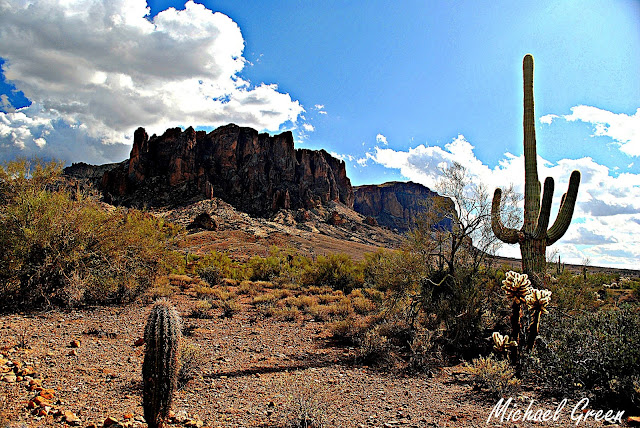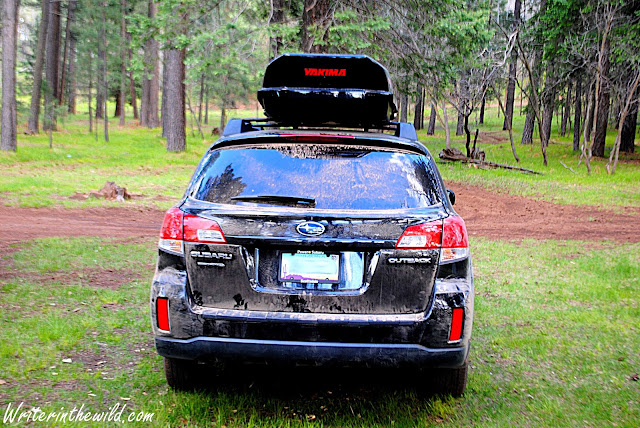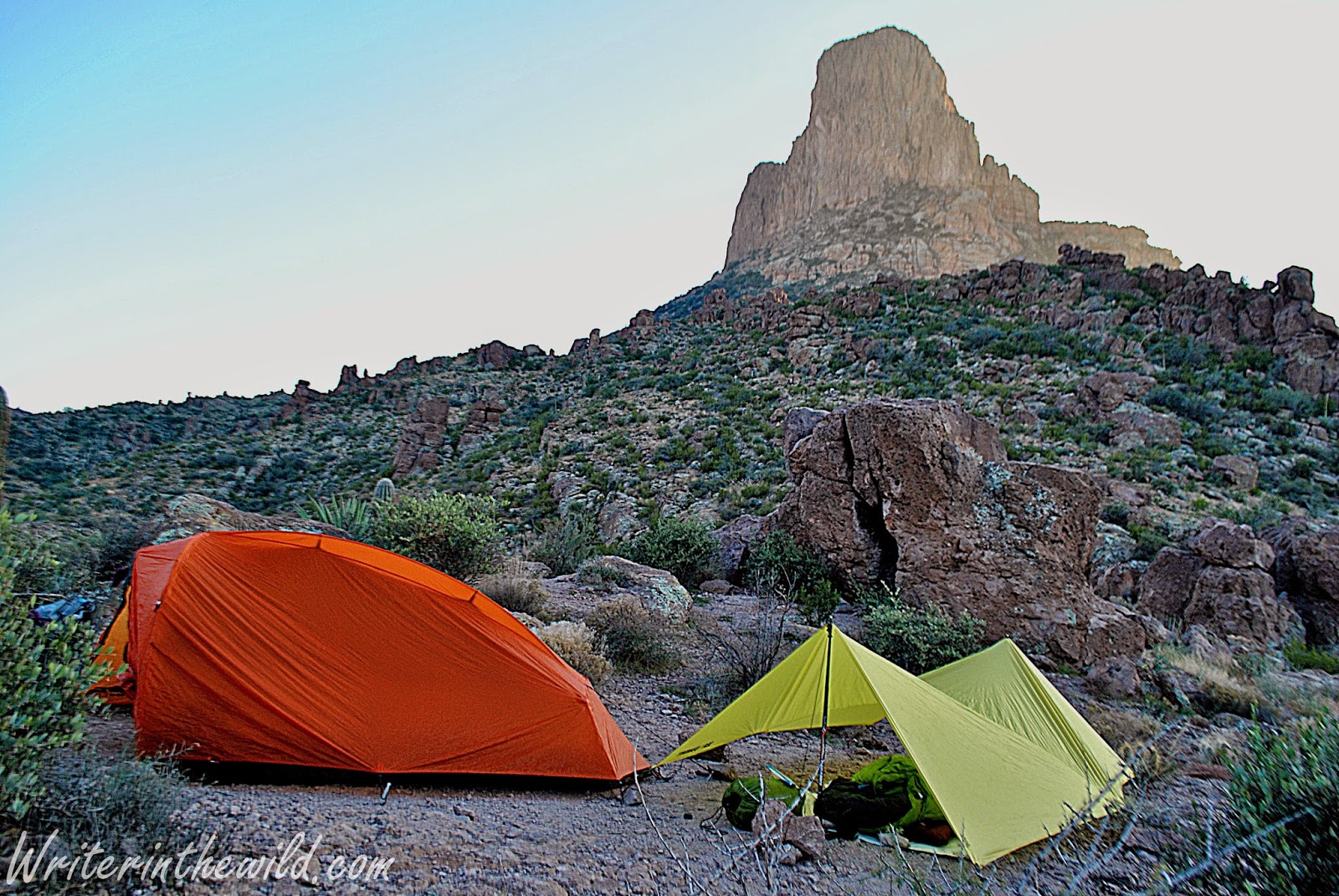 |
| Robert Hammond in the Sierra - photo courtesy of Robert Hammond. |
At 58 years old, Robert Hammond did something entirely unexpected. He sold his business, his car, all his possessions, and wandered off alone, on foot, into the Sonoran Desert. He wasn’t crazy. He wasn't trying to live out any romanticized mountain-man fantasy. Robert Hammond was trying to change his life.
From a dusty roadside in Ojai, California, Hammond reflected on the year that nearly killed him. In 2014, the anxiety and depression he had battled since childhood had finally won.
“I have covered up my mental duress with wit, humor, alcohol and drugs to mask the living hell that makes its residence in my brain,” Hammond said.
In 2014, he couldn’t contain that hell any longer. After he lost his temper with his teenage son Dillon, Hammond set out on a 15,000-mile road trip around the Southwest. Long a nature lover, Hammond thought the natural beauty of the vast western landscape would heal him. He thought it would change him. But the road trip soon morphed into a “death drive.”
Behind the wheel he dwelt on the incident with Dillon. His own words knives in his heart. Guilt and regret often obscured the desert vistas and mountain views outside his Jeep windows. In 10 minutes of screaming at his son he had “ruined” a tightknit relationship that had taken him 17 years to build. He could never forgive himself. He reasoned that he was better off dead.
Hammond yearned to “check out,” but the pain he knew it would cause those he loved always stayed his hand. Then one night in a “sleazy” Roswell motel room, he saw a report of Robin Williams’ suicide on T.V., and it saved his life.
“I realized that depression is non-judgmental and does not discriminate,” Hammond said.
Above all, he considered how devastated Williams’ kids must be, and resolved not to afflict his own kids with the same pain.
He resolved to be a better father. He needed to see his son graduate high school. He had to be with his daughter on her wedding day. He wanted to be there for the birth of his grandkids. He wanted to live. But how?
“I knew big changes had to take place as I was among the walking dead,” Hammond said.
He decided to walk off the dead by trekking 2,500 miles to Seattle via the Pacific Crest Trail. There he’ll see his oldest daughter Lauren’s wedding and meet his new grandchild. Maybe do some motivational speaking if anyone cares to listen. After a brief stay, he wants to catch the Continental Divide Trail in Montana, and trek another 3,000 miles back to Arizona.
Dillon believed his dad’s plan was “a little crazy.” He supported him anyway, hoping that this trail to self-discovery would bring the change he knew his father desperately needed. Hopes aside, Dillon can’t help but feel a little skeptical. This isn’t the first time his father has tried to remake himself. Through the years Dillon has seen the back-and-forth. The up-and-down. He knows the mammoth challenge his dad is facing in becoming the man he wants to be. Despite this, Dillon remains ever optimistic.
This time his dad, “seems to have a different attitude,” he said.
After a January 15 start from New River, Arizona, Hammond is poised to enter the famed Sierra Nevada range in California, but high winds and a frigid forecast find him waiting restlessly in the low-country. He’s battled injury, illness, hunger, thirst and cold. He quit his antidepressants cold turkey three weeks ago. But well over 1,000 miles in, his spirits are high.
The desert took its toll. Water was scarce. Some days he carried 2 gallons to be safe. Other days he drank from puddles. His 16-mile-a-day pace brutalized his feet (he’s currently on his fourth pair of boots). A chest infection laid him up for four days; shin splints for another two. But he kept going.
In southern California, he veered off the PCT. His savings dried up and hotels were no longer an option in towns. He slept in a train car, under bridges, on beaches and next to highways. In San Bernardino, he stealth camped behind Sears.
Despite some detours, Hammond always returns to the PCT. Like so many other hikers, drawn to the solitude and peace of mind that only wilderness provides. For Hammond, the trail is therapy. The lonely miles provide endless hours of reflection and retrospection. The snowcapped mountains a reminder of that which truly matters; family, friends and human decency.
It is this decency that has made the largest impact on Hammond. His elderly mother faithfully sending care packages. The companionship of Chris (aka Knuckles) from his early days on the PCT. Priscilla Kelly, a Facebook friend he’d never met who provided him food and shelter. “Anonymous Dave” in Mammoth Lakes, who gave him gloves and sunglasses. The friends and strangers who have donated to his GoFundMe page. Longtime friend Lynda Lukan offering support and encouragement over the phone whenever he has a signal.
Hammond’s journey was somewhat of a shock for Lukan. Although they shared a home for five years, she never suspected the severity of Hammond’s emotional problems. For her, Hammond was a good man and a good father, who had regular problems like everyone else. It wasn't until after his fight with Dillon that she realized just how much he was suffering.
“I hope he gets clarity and renewness (sic). I hope he can forgive himself,” Lukan said.
As Hammond fights snow and cold in the Sierras, his quest continues. He feels like a changed man, and physically he is. Hammond has lost 30 pounds as hard-earned miles have slowly replaced fat with lean muscle mass. Emotionally, the depression and anxiety have mostly disappeared, but so far there’s no end in sight on the path to self-forgiveness.
“Failure has not been an option at all, ever,” he said.
Only time will tell.
*Hammond is currently back in Phoenix waiting to see Dillon graduate, and working odd jobs to raise money for the completion of his journey. You can help him get back on the trail by donating to his GoFundMe page, here.




















































